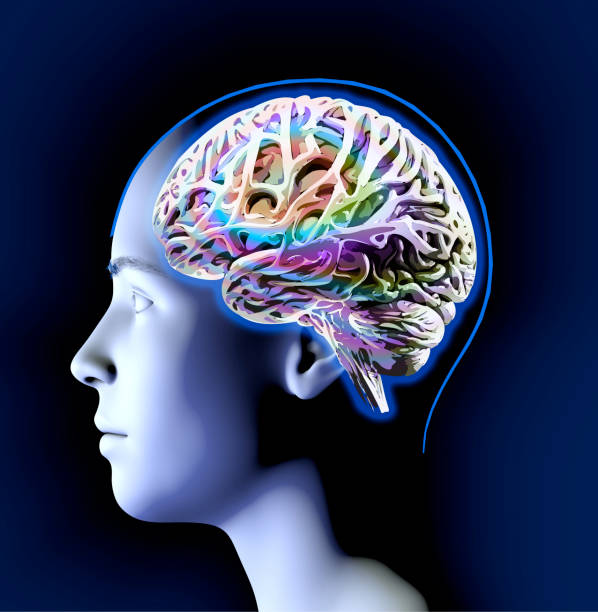Why are humans drawn to certain physical features in others? Why does the curve of a hip, the shape of a face, or the sight of breasts provoke such a powerful mix of emotional, physical, and even spiritual responses? Of all the species on Earth, humans are unusual—perhaps even unique—in how we form pair bonds, how we express sexuality, and how we display secondary sexual characteristics. Among these, the human breast stands out not only for its prominence but for the intense fascination and symbolic meaning it holds across cultures.
In this article, we explore the profound interplay between sex, bonding, and breasts—an ancient triad that has shaped the trajectory of human evolution, culture, and psychology. This is a journey through evolutionary biology, neuroscience, anthropology, and even mythology. We’ll uncover how these aspects of human life are deeply connected in both body and mind, and why understanding them might hold the key to unlocking some of attraction’s oldest and most enduring mysteries.
The Evolution of Human Sexuality: From Mating to Meaning
Human sexuality is a curious blend of biology and meaning. In most animals, sex is primarily for reproduction. But humans engage in sexual behavior far beyond the needs of conception. We do it for pleasure, for bonding, for comfort, and even for power or social status. This detachment of sex from strictly reproductive purposes is one of the defining features of Homo sapiens.
This distinction is rooted in our evolutionary history. As our brains grew larger and our infants more helpless at birth, human offspring required longer periods of care. This led to the rise of long-term pair bonding and cooperative parenting—a major departure from the mating systems of our closest primate relatives like chimpanzees and bonobos.
Sex in humans became a tool not just for procreation, but for relationship maintenance. This shift placed new pressures on both males and females. For males, it meant investing time and resources into a partner and offspring; for females, it meant finding a partner who would stay, protect, and provide. As a result, physical traits that signaled fertility, health, and long-term commitment became evolutionary beacons. And among these traits, the breast emerged as a surprisingly central player.
The Mystery of the Human Breast
Unlike nearly all other mammals, human females develop permanently enlarged breasts after puberty—regardless of pregnancy or lactation status. In most species, breasts swell only temporarily, during nursing. So why would humans evolve such a distinct and enduring secondary sexual characteristic?
One widely cited theory suggests that breasts evolved as a visual indicator of fertility and sexual maturity. In a species that became increasingly reliant on face-to-face interaction and social bonding, visual cues took on added importance. Rounded, prominent breasts may have served as a “reproductive billboard,” signaling youth, health, and reproductive capability.
But there’s more to the story. Breasts are made of fatty tissue and glandular structures, and their shape varies dramatically between individuals. Their primary biological function is lactation, but their secondary sexual role—in attraction and arousal—is deeply embedded in human culture and psychology. This duality has puzzled scientists for decades. Why would a trait designed for feeding infants become one of the most powerful symbols of sexuality in human society?
Some evolutionary anthropologists argue that the human breast mimics the visual cues of the buttocks—another prominent fertility signal. As humans shifted to bipedal locomotion and began mating face-to-face, breast morphology may have evolved to elicit the same attraction response. Others propose that breasts act as a “nurturing signal,” activating deep-seated neural circuits associated with comfort, care, and bonding.
Whatever their original evolutionary function, human breasts have acquired a complex set of meanings—biological, psychological, and symbolic—that stretch far beyond their physical form.
Neurobiology of Attraction and Touch: Breasts and the Brain
Attraction is not just a visual experience. It is deeply rooted in the neurochemistry of the brain. When people are physically attracted to one another, a cascade of neurotransmitters floods the nervous system. Dopamine, the “pleasure chemical,” surges in the reward centers of the brain, while oxytocin, the “bonding hormone,” fosters closeness and trust.
Touching, kissing, or even gazing at a partner’s breasts can amplify this response. In women, the nipples are wired with dense nerve endings connected to the somatosensory cortex—the same region of the brain that processes genital stimulation. Studies using fMRI have shown that nipple stimulation activates not just sexual centers in the brain, but also those associated with emotional bonding.
In evolutionary terms, this overlap likely served a dual purpose: reinforcing the connection between mother and infant during breastfeeding, and later between lovers during sexual intimacy. This neurological pathway helps explain why breast stimulation plays a central role in human sexual behavior—and why it evokes such intense emotional and physical reactions.
Breasts and Bonding: A Closer Look at Oxytocin and Attachment
One of the most critical hormones involved in bonding is oxytocin. Often called the “love hormone,” oxytocin is released during breastfeeding, orgasm, and intimate touch. Its primary role is to create a sense of trust and closeness, reinforcing emotional connections between individuals.
In romantic relationships, oxytocin plays a powerful role in long-term bonding. Physical touch, including breast stimulation, can increase oxytocin levels, deepening emotional intimacy and attachment. This biochemical mechanism may have been essential for the formation of stable pair bonds in early human societies.
Anthropologists have long observed that in many cultures, touching, caressing, or even exposing the breasts is not always overtly sexual—it can be an act of comfort, care, or trust. This suggests that breasts, through their unique neurochemical pathways, are part of a larger system of emotional regulation and social cohesion.
Moreover, oxytocin isn’t just about warm fuzzy feelings. It has real biological effects—it lowers cortisol (a stress hormone), reduces anxiety, and fosters cooperation. This could explain why intimate breast-focused touch within a relationship doesn’t just feel good—it creates a deep, physiological sense of safety.
Culture and Symbolism: The Breast in History, Religion, and Art
Across human history, breasts have taken on mythic proportions. They are celebrated in art, feared in religion, and regulated in public space. From the voluptuous figures of prehistoric fertility goddesses like the Venus of Willendorf to the nursing Madonnas of medieval Christianity, the breast has been a symbol of fertility, sustenance, femininity, and even divine love.
In ancient Egypt and Greece, depictions of goddesses emphasized the breast as a life-giving force. In Hinduism, breasts are often featured prominently in depictions of goddesses like Parvati and Lakshmi, symbolizing abundance and cosmic nurturing. In many African traditions, breasts are honored as sacred symbols of motherhood and continuity.
Yet in other contexts, especially in modern Western societies, breasts are simultaneously sexualized and censored. This cultural paradox—celebrating the breast as a marker of female beauty while concealing it in public—reflects deeper tensions around sexuality, power, and control.
Fashion and media have further complicated the symbolism. The ideal breast has been shaped by cultural fads, from the corseted busts of Victorian women to the augmented bodies of Instagram influencers. Breasts, in many ways, have become a canvas upon which society projects its ideas about gender, desirability, and identity.
Men and Breasts: An Evolutionary Perspective on Male Attraction
Why are heterosexual men, across cultures and time periods, often fascinated by female breasts? Is it purely cultural conditioning, or is there an evolutionary basis?
One theory holds that male attraction to breasts is rooted in honest signaling—breast size and symmetry may indicate a woman’s health, fertility, and even hormonal balance. While the science is mixed on whether larger breasts are truly more fertile, symmetry and firmness can signal youth, which correlates with reproductive potential.
Another view suggests that male attraction to breasts evolved not because of reproduction per se, but because of pair bonding. If breast stimulation increases oxytocin and enhances emotional connection, then males who were attracted to breasts may have had more stable, cooperative relationships—and better reproductive success. In this framework, attraction to breasts is not about short-term mating, but long-term investment.
Neuroscientists also point to visual dominance in male sexual arousal patterns. Men tend to respond more strongly to visual cues, while women often emphasize emotional or contextual factors. Breasts, being visually prominent and sexually responsive, become a powerful visual stimulus in male arousal circuits.
Female Perspectives: Power, Identity, and Agency
It’s easy to fall into the trap of discussing breasts solely through the lens of male attraction. But for women, breasts are not just objects of desire—they are part of a deeply personal and sometimes fraught experience of identity, sexuality, and social expectation.
Many women report complex relationships with their breasts, shaped by puberty, motherhood, body image, illness, and culture. Breasts can be a source of pride, vulnerability, sensuality, discomfort, or empowerment. The choice to reveal, conceal, augment, or reduce breasts carries layers of meaning—personal, political, and psychological.
In feminist theory, the breast has been both a site of oppression and liberation. While some critiques point to the sexual objectification of women’s bodies, others highlight the power of reclaiming the breast as a symbol of autonomy and creative force.
From breastfeeding in public to “Free the Nipple” campaigns, the breast remains a flashpoint in debates over gender equality, censorship, and bodily rights. These movements challenge the narrow definitions of sexual propriety and push for a more nuanced, humanized understanding of the breast as both a sexual and social organ.
Breasts in Parenthood and Bonding Beyond Romance
One of the most ancient and powerful roles of the breast is in nourishing life. Breastfeeding is not just a way to feed an infant—it’s a profound bonding experience that engages every level of physiology, from the release of oxytocin to the regulation of stress hormones in both mother and child.
In this light, the breast is more than a sexual signal—it is a tool of survival, connection, and emotional development. The closeness and touch involved in breastfeeding help lay the foundation for secure attachment, emotional regulation, and even immune function in newborns.
This dual role—both erotic and nurturing—sets the human breast apart from most other sexual characteristics. It operates on multiple registers, bridging the gap between biological necessity and emotional intimacy.
Conclusion: The Oldest Mystery Still Unfolding
In exploring sex, bonding, and breasts, we uncover a narrative far richer than mere attraction. We glimpse the deep evolutionary logic behind our feelings, desires, and symbols. The human breast is not merely a site of arousal or reproduction—it is a nexus of biology, emotion, and meaning.
Attraction, it turns out, is not just about finding a mate. It’s about connecting, trusting, and creating shared lives. The breast, in all its complexity, is one of the oldest keys to that connection. It has fed our bodies, bonded our families, inspired our myths, and shaped our histories. And it continues to provoke, perplex, and fascinate us—not because of its form alone, but because of everything it represents: life, love, power, vulnerability, and the enduring mystery of human connection.






